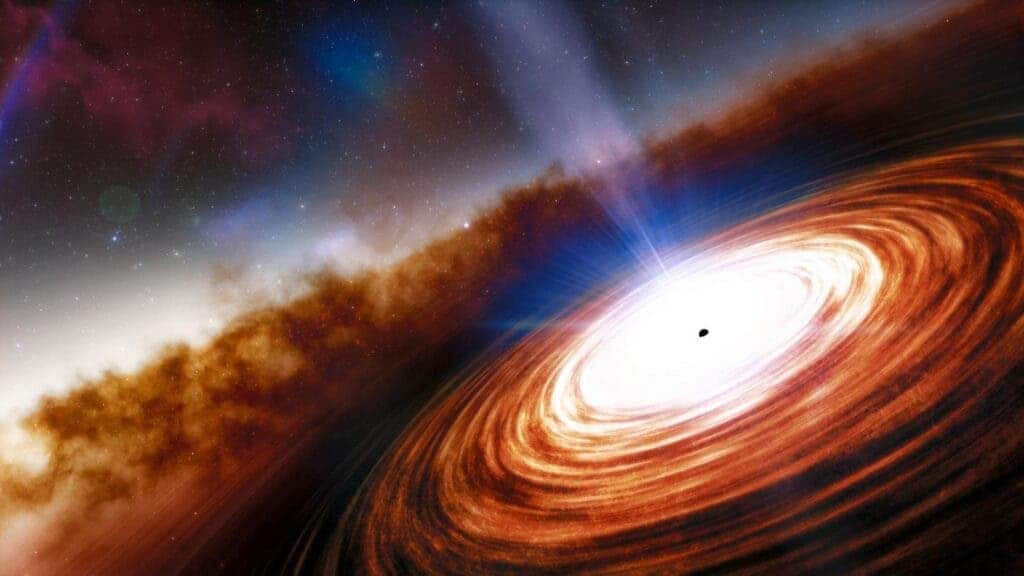
The core of a galaxy is typically brightly lit due to highly luminous objects known as quasars — the brightest in the universe actually — that are powered by gas spiraling at high velocity from an extremely large black hole. One such bright source was recently discovered by astronomers over 13 billion light-years away. The quasar in question is thus associated with the farthest and, at the same time, the oldest supermassive black hole encountered so far.
The quasar dubbed J0313-1806 is of great significance for scientists since it formed just 670 million years after the universe as we know it came into existence. As such, the mysterious cosmic object may help shed light on how the ancient universe functioned, setting the stage for its evolution in its current configuration. Previously, the oldest black hole found by scientists was 690 million years old.
But how can black holes be so luminous — aren’t they supposed to suck up everything in their vicinity, even light? That’s of course still true, but when a black hole reaches gargantuan proportions millions to billions of times more massive than the sun, its gravity can create a whirlwind of gas and dust. As matter is funneled into the black hole, it forms a trail of debris shaped like a disk around the black hole. This debris revolves at dizzying speeds and, hence, high energy, which is expelled into the universe. Here on Earth, we can see these eruptions of electromagnetic radiation in the visible spectrum.
And this radiation is extremely intense. The authors of the new study — who studied the quasar using the Atacama Large Millimeter/submillimeter Array (ALMA) in Chile, the world’s largest radio telescope, and two observatories on Mauna Kea in Hawaii — found that J0313-1806 is about 1,000 times brighter than all of the Milky Way galaxy.
But as it often has it when speaking of black holes, for every new thing we learn about them, there are also new questions that scientists can’t answer yet.
Calculations performed by the team of researchers, which included lead author Feige Wang, a Hubble Fellow at the University of Arizona’s Steward Observatory, suggest that the quasar’s black hole has a mass of around 1.6 billion times that of the sun — far too great for such a short period of growth time. Where did all that mass come from considering the quasar is so young?
Some of the available ‘food’ for black holes in the early universe would have been first-generation massive stars largely made of hydrogen and lacking in heavy elements that make up later stars. But even if the black hole formed as early as 100 million years after the Big Bang and grew as quickly as possible, it still would have had to have at least 10,000 solar masses from the very beginning. Things don’t add up, which tells us that astronomers are still missing some pieces of the puzzle. But the authors of the new study have some ideas.
“This tells you that no matter what you do, the seed of this black hole must have formed by a different mechanism,” said co-author Xiaohui Fan, Regents Professor and associate head of the University of Arizona Department of Astronomy. “In this case, one that involves vast quantities of primordial, cold hydrogen gas directly collapsing into a seed black hole.”
The monster black hole at J0313-1806 is still growing at a rapid pace, gobbling up the equivalent of 25 suns every day. How exactly such a supermassive black hole came into existence could be answered with data provided by the upcoming and much-anticipated James Webb Space Telescope, slated to launch on October 31.
The findings are due to appear in the next edition of The Astrophysical Journal Letters and were presented at the 237th Meeting of the American Astronomical Society held this week.






